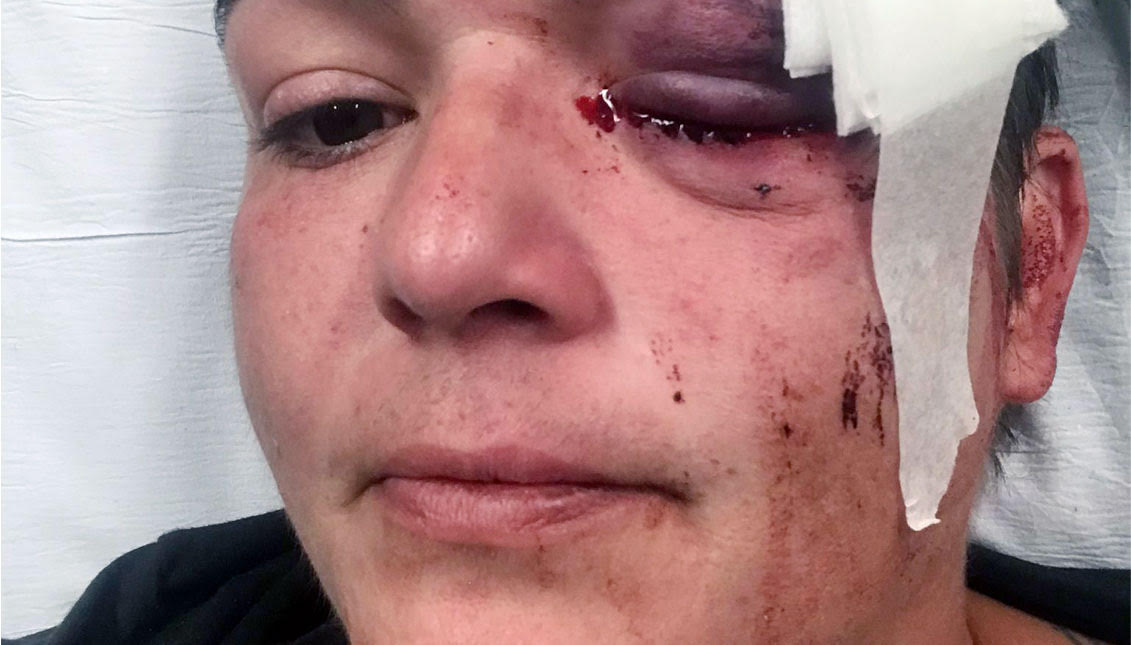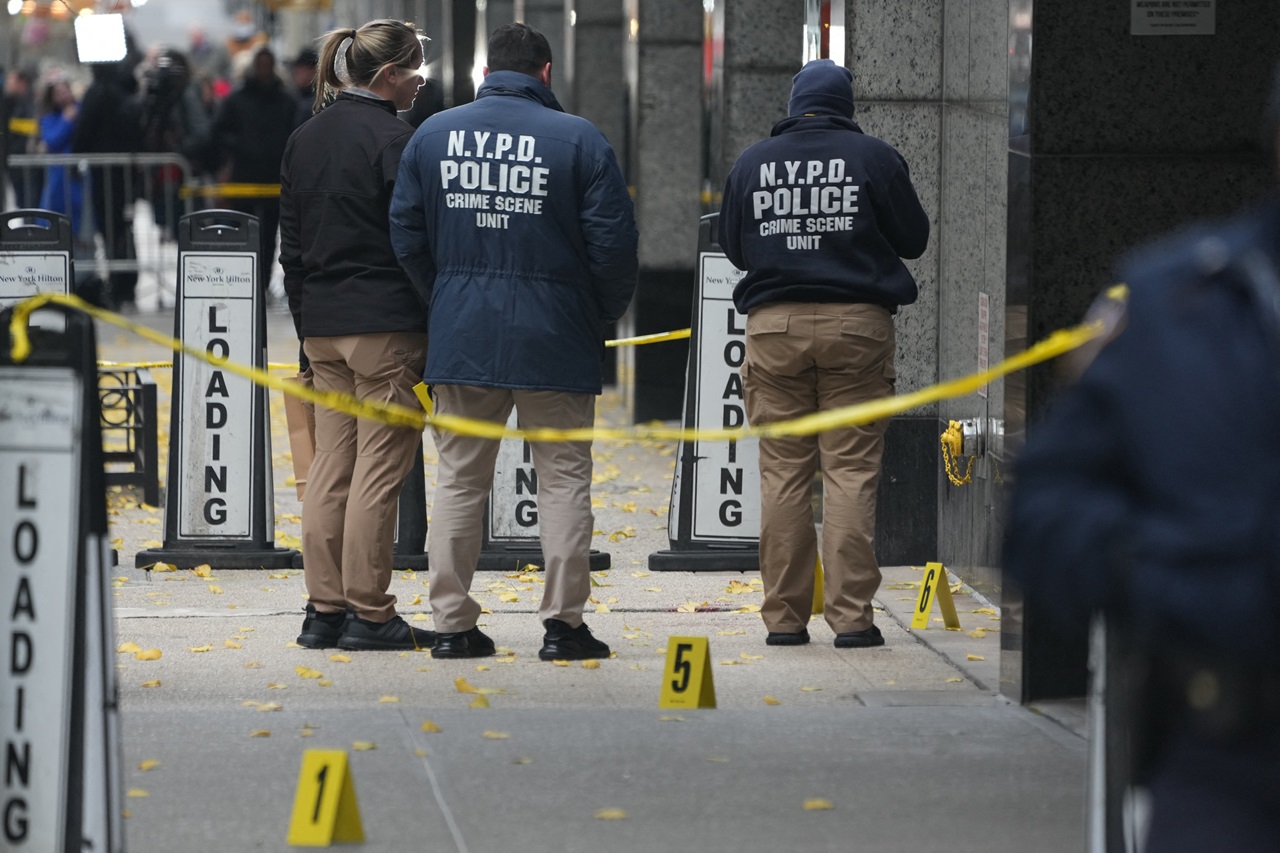
Attacks on journalists during protests over George Floyd's death speaks of a dangerous anti-democratic phenomenon
At least 100 serious incidents have been reported against journalists and media outlets during the protests over the death of an African-American man at the…
Remember when Donald Trump called the media "the enemy of the people"? Well, that rhetoric now has an echo on the streets of the country.
Mass protests across the country against excessive violence and racial profiling by law enforcement have also seen the resurgence of a phenomenon common in countries with less democratic governments: police violence against the media.
In the wake of the death of George Floyd, a 47-year-old African-American man who lost consciousness under the knee of a white police officer in Minneapolis, street protests have escalated exponentially over the past few days, with a crushing police response.
According to a spokesman for the U.S. Press Freedom Tracker, led by the Freedom of the Press Foundation, "at least 100 different incidents of attacks on the media" have been documented over the weekend alone.
These numbers increased as protest sites across the country grew.
During rallies outside the White House on Sunday, for example, MSNBC journalist Garrett Haake was hit by an alleged rubber bullet while reporting live. At the same location, a CNN photographer was beaten by a police officer with a club.
WATCH: @AliVelshi reports from Minneapolis as police fire tear gas toward protesters: “There has been no provocation ... The police pulled into this intersection unprovoked.” pic.twitter.com/OEUXdPg73O
— MSNBC (@MSNBC) May 31, 2020
In New York City, Tyler Blint Welsh of the Wall Street Journal used Twitter to report how riot police had hit his face several times and pushed him to the ground.
"I'm just sitting here crying," he wrote. "This sucks."
Lost my glasses and my ankle is in searing pain after NYPD hit me in the face multiple times with riot shields and pushed me to the ground. I was backing away as request, with my hands up. My NYPD-issued press badge was clearly visible. I’m just sitting here crying. This sucks.
— Tyler Blint- Welsh (@tylergabriel_) June 1, 2020
Similarly, KPCC radio reporter Adolpho Guzman-Lopez showed a rubber bullet wound in his throat on Twitter.
"I had just interviewed a man with my phone at 3rd and Pine, and a cop pointed a gun at me and shot me in the throat.”
I just got hit by a rubber bullet near the bottom of my throat. I had just interviewed a man with my phone at 3rd and Pine and a police officer aimed and shot me in the throat, I saw the bullet bounce onto the street @LAist @kpcc OK, that’s one way to stop me, for a while pic.twitter.com/9C2u5KmscG
— Adolfo Guzman-Lopez (@AGuzmanLopez) June 1, 2020
At a time when nothing escapes the cameras of social networks, police violence has taken a front-row seat.
Ali Velshi of MSNBC, Leland Vittert of Fox News, and Omar Jimenez of CNN have all been victims in one way or another of the same evil that protesters reject on the streets: violence and institutionalized racism.
Bruce Brown, executive director of the Reporters Committee for the Freedom of the Press, cited the number of reports of journalists being attacked by law enforcement in a news release.
“The numerous, targeted attacks that journalists reporting on protests across the country have faced from law enforcement over the last two nights are both reprehensible and clear violations of the First Amendment,” he said. “These attacks not only endanger our free press, but also threaten our democracy and the essential role that journalists play in safeguarding constitutional rights.
He added, “Many of these attacks were captured on live broadcasts. The video evidence showing journalists under police assault simply for doing their jobs is harrowing. We strongly condemn these actions and will be contacting law enforcement in each jurisdiction to demand a full explanation and accountability for officers who knowingly targeted journalists.”
He also condemned the attacks on journalists by protesters. “Assaults on journalists from protesters are unlawful and make it harder for reporters to keep the country informed during this period of civil unrest,” he said.
For journalists like Molly Hennessy-Fiske, these attacks are something radically new to the profession.
RELATED CONTENT
“I’ve covered protests involving police in Ferguson, Mo., Baton Rouge, La., Dallas, and Los Angeles. I’ve also covered the U.S. military in war zones, including Iraq and Afghanistan. I have never been fired at by police until tonight,” she wrote on Twitter, after being attacked along with other reporters and photographers in Minneapolis.
“The Minnesota State Patrol was advancing on protesters and us. We identified ourselves as press and they fired tear gas canisters on us at point-blank range,” Hennessy-Fiske said in a Twitter video, adding that she got hit in the leg and had to scale a brick wall in order to take shelter. “I was saying, ‘Where do we go? Where do we go?’ They did not tell us where to go, they did not direct us, they just fired on us.”
Minnesota State Patrol just fired tear gas at reporters and photographers at point blank range. pic.twitter.com/r7X6J7LKo8
— Molly Hennessy-Fiske (@mollyhf) May 31, 2020
Journalists like Linda Tirado, a photographer, and independent activist, were seriously injured. Tirado was blinded after she was hit in the eye with a nonlethal round while covering unrest in Minneapolis, The Guardian reported.
an update: I am permanently blind in my left eye, and the docs absolutely refuse to let me go back to work for they say six weeks. I’m definitely not allowed to be near smoke or gas.
— Linda Tirado (@KillerMartinis) May 30, 2020
Usually if I had to stay home I’d spend a lot of time amplifying folk but reading hurts today
Meanwhile, the president continued to write on Twitter that networks like CNN, MSNBC, the New York Times and the Washington Post were sources of "disinformation.”
"Fake news is the enemy of the people!"
Much more “disinformation” coming out of CNN, MSDNC, @nytimes and @washingtonpost, by far, than coming out of any foreign country, even combined. Fake News is the Enemy of the People!
— Donald J. Trump (@realDonaldTrump) May 30, 2020
The terrible images of people vandalizing CNN's Atlanta headquarters on Friday were an ominous picture of what hate speech reaps from political leaders around the country.
And while talk of demagoguery against journalism in the country goes back to the Nixon era, the Trump presidency has made it a thousand times worse.
“By denigrating journalists so often, he has degraded respect for what journalists do and the crucial role they play in a democracy,” Suzanne Nossel, executive director of PEN America, a nonprofit free speech organization, told the Washington Post.
“He’s been remarkably effective in contributing to this topsy-turvy sense that journalists are the opposition,” she added.
For his part, the executive director of the Committee to Protect Journalists, Joel Simon, agreed saying: “Trump tapped into hostility that was already there, and he has piled on and made it worse.”
“The president could have lowered the temperature by reminding people that journalists are essential to our democracy and deserve to be allowed to do their jobs,” he said.











LEAVE A COMMENT:
Join the discussion! Leave a comment.